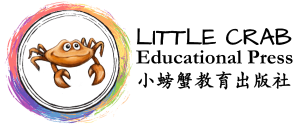
Our Exact Guide for A Whole-Class Word Game That Will Get Everyone Laughing, Learning And Working Together
Share
The typical school year’s end is rapidly approaching, and most teachers notice that this is the time students can get especially “squirrelly”, meaning the good weather outdoors is calling to them and they are just eager to start their vacation time. What can be particularly challenging is that this is also the time of year that teachers will reach their capacity to keep said squirrely students motivated (Hello mental fatigue, we meet again!). To that we say “Don’t burn out yet!” We have the perfect “done for you” Mandarin vocabulary word set material called Tortoise Tiles, which requires minimal setup on your part yet is still super flexible, meaning the tiles can be reused countless ways to activate that ultimate, motivation-sparking teaching tool: gamification. Read on to learn how to learn one of many word games you can run with your entire class or smaller groups using the same set of Tortoise Tiles, and be inspired to create your own games too - without having to reinvent the wheel (or even having to rearrange the setup!) every time.
We call Tortoise Tiles our “better than flashcards vocabulary learning hack”. (If you want more background info about what the Tortoise Tile Method for vocabulary self-study is, and what Tortoise Tiles themselves are, check out our short demo video on our Youtube channel). At first glance, they seem like large flashcards, and yes, they are a redesign of that technology, but one of several elements that LCEP’s Tortoise Tile Method has that flashcards don’t is it provides the opportunity to address all three learning styles when using the tiles: visual, auditory, and kinesthetic. Restless students who have trouble staying in their seats will love Tortoise Tiles because they are meant to be used with movement!
Let’s say you wanted to find another way to help your students remember key words to describe a significant holiday in Mandarin, such as Dragon Boat Festival, or Mid-Autumn Festival, etc. Our ABCs of Holidays series of Tortoise Tile books covers eleven significant holidays, both Chinese and North American, and each of the eight books in that series contains a twenty-six word set based on the theme of the book’s cover. The English words are the “A-Z” on the topic, and the Tortoise Tiles within a book display their Mandarin counterparts. In the case of Easter, St. Patrick’s Day, Tomb Sweeping Day, and Dragon Boat Festival, we combined key words for those four holidays into one book. For North American “New Years/New Year’s Eve” and Chinese New Year/Spring Festival, we combined those words into one book. The six other books in the series cover one holiday each - you can find them all here. Using Mid-Autumn Festival as our example word set, likely prior to playing games with the Tortoise Tiles (although Tortoise Tiles can be used as a way in for the initial exposure to a topic as well) the students would have been learning about the festival, its cultural significance, and some history behind key words that relate to that holiday.
Hot Tip: The class can help to stick the twenty-six Tortoise Tiles on the wall with poster gum (top corners only) so you don’t even have to do that part of the set up! And, not every game’s layout specifically requires a perfect grid format for it to work, either.
Seasoned teachers will read many lesson plans or game instructions and eventually start to recognize patterns. It can lead to teachers feeling burn-out because it’s hard to make a year’s long chain of learning experiences feel full of variety for the students. But what can make or break a class where the students walk out feeling revived and inspired often isn’t just the teaching tool or material, it’s whether or not the teacher was able to create a welcoming environment from the get-go, that breaks the ice between the students enough for them to then do their best work during the task. So, the thinking around “How can we set game rules such that they increase the likelihood of each student enjoying the game no matter their personality or abilities?” is built into our game instructions for you.
Game Name
TT Taboo (Tortoise Tile Taboo)
Game Style
Speed Game
Game Hook
Using A Timer to Ratchet the Stakes and Add Tension and Excitement a.k.a. Race-Against-the-Clock as a Team
Race-against-the-clock based games can be great because they present the opportunity to have the whole class work as a team if you want to play down competitiveness between students for any reason. In other words, the class is the hero and time is their foe, instead of each other. Here’s how you could do one such game:
Teacher's Instructions to the Class
The easiest way to lead this game is to use a simple laser pointer, and tell the class, “I will set a timer and when the time starts, I will point at a word on the wall with my laser pointer. One by one, you students will each take a turn to be “it” - you’ll be the only one who is allowed to say the word on the Tortoise Tile and get the class a point. First, I will ask you two questions: “这个词用英语怎么说?” / “How do you say this word in English?” and “这个词用普通话怎么说?/ “How do you say this word in Mandarin?” Next, if you don’t know one or both of the answers, the whole class is then allowed to help you try to remember the word. You and the class have to communicate in Mandarin no matter whether you are missing the Mandarin OR the English answer, and no one can say the word itself but you. We will vote if we think someone is cheating. There may be rules we decide as a group that we need to add along the way, but the aim of the game is to recall all of the English and Mandarin for each of the target words*. If the class has correctly said at least [Teacher chooses a number depending on the class’ ability level] out of the total Tortoise Tiles before the timer has gone off, the class wins.”
*Teacher chooses the number and selection from no lower than 8 up to the full 26 depending on how hard/easy/long/short you want the game to be.
Note that you can adjust the level of difficulty to be easier by saying that classmates can speak English to one another or to be more challenging by saying they must use Mandarin-only to help each other. But no matter what, not unlike the game of Taboo, the helpers cannot shout out the answer themselves. This is a flexible teaching tool - if you have an instinct for how a game will go best in your classroom, Tortoise Tiles frequently allow you to make the adjustment you want.
The final instruction before the game starts is to tell the students that no one can “pass” their turn, and this is where the physical element of the games comes into play. If whoever is “it” still doesn’t remember how to say the target word in both English and Mandarin within the first 3-5 seconds, and help from the class doesn’t jog their memory, then they need to stand up and slowly move toward the Tortoise Tile on the wall. You can shake things up by having students do lunges or specific stretches to the tiles on the wall, or making a rule that they have to do a silly walk (or wheel/roll) over to the wall. If they remember the word before they get to the wall, they can shout it with glee and go back to their seat to help the next player along with the rest of the class. But if they get to the wall before remembering the word, they must flip the Tortoise Tile up, secretly reveal the information on the back just to themselves, and then that student goes back to their seat to rejoin the class in helping the next student (they don’t divulge the answer). The chances of a student getting the same word again before the timer has run out is a low risk if you are leading the game.
Example Game
Here’s a mock-game so you can visualise a class doing it:
The word you point to within the set of Tortoise Tiles on the wall is 箭头 (representing letter A in the book the Tortoise Tiles: the ABCs of Mid-Autumn Festival - 中秋节). The student who is “it” maybe remembers the Mandarin sounds for the word, so when you ask “这个词用普通话怎么说?” they answer, “jiàn tóu.” But when you ask, “这个词用英语怎么说?” maybe then they clam up. So the class is allowed to start offering ideas and descriptions to help the player remember. Things like “后羿射这些!” or “一种非常古老的武器!” and then the student might say “啊! 我想起来了! Arrows.” And then, the class would get a point. You can mark the ones the students got right with post it notes to keep track if you like. If the student doesn’t get the answer after some help, they would then have to get up and have one last chance to say the word before they reach the wall. If your rule is to do a silly walk/wheel/roll up to the Tortoise Tile they are working on, enjoy the laughter that will ensue.
There’s way more where this came from!
Tell us - What’s the biggest challenge or success you’ve had when gamifying your lessons? In this post you’ve learned that TT Taboo is one Tortoise Tile game that is flexible, promotes teamwork, camaraderie, communicativeness, memory recall, and it involves the body in learning. It’s flexible for the teacher to be able to make it a faster or slower, harder or easier game without changing much in terms of the presentation of the materials. That said, due to the race-against-the-clock element, it can become quite a loud, boisterous game!
Looking for a totally different game to use with Tortoise Tiles that is calmer and quieter? Sign up to get an alert when that next post is ready for you, and we'll send you Your DIY Free Guide: Vocabulary Study System - the Tortoise Tile Method! (There’s way more where this came from!)
